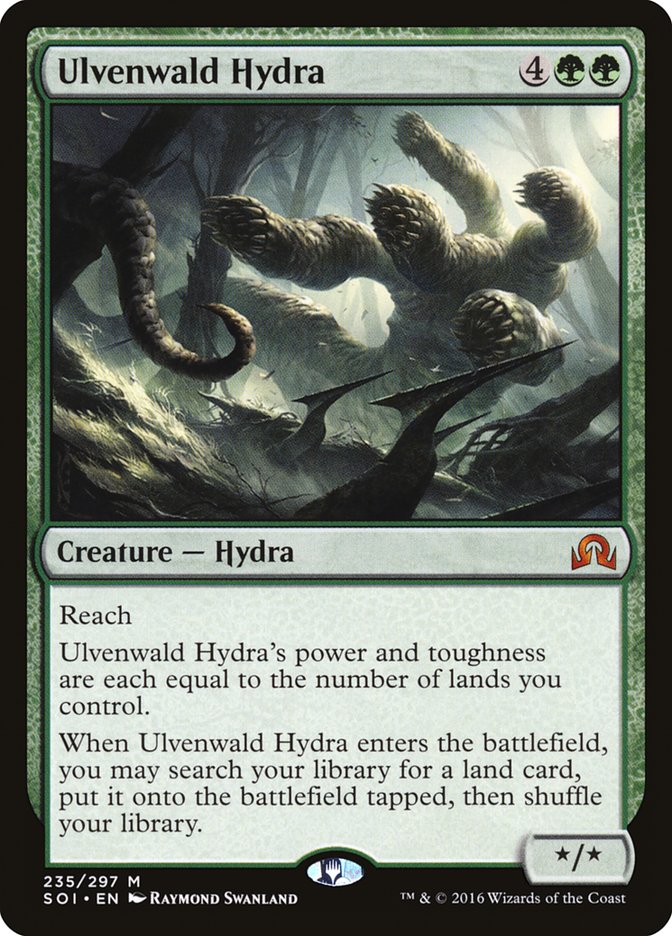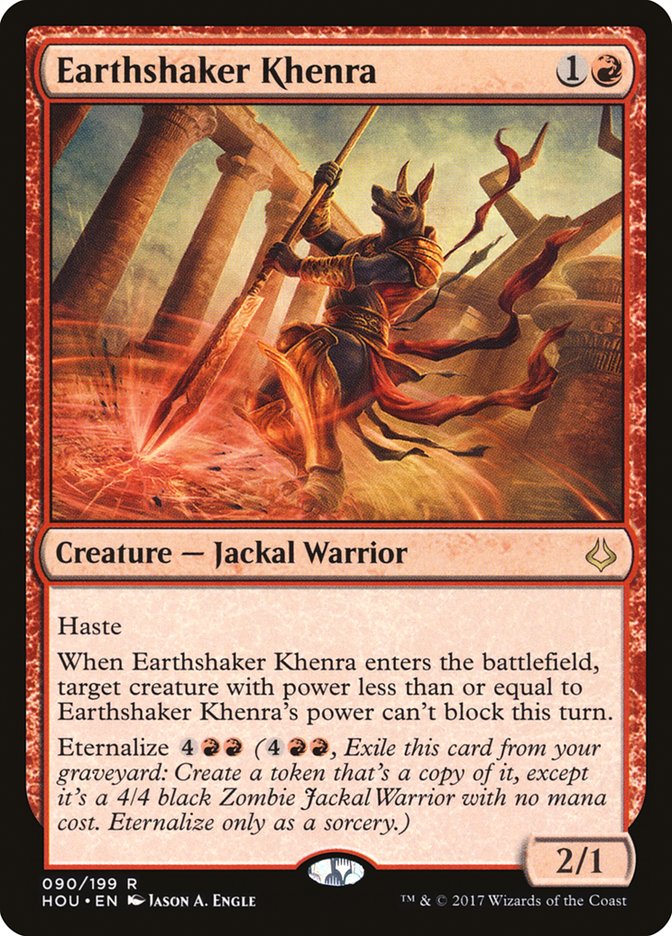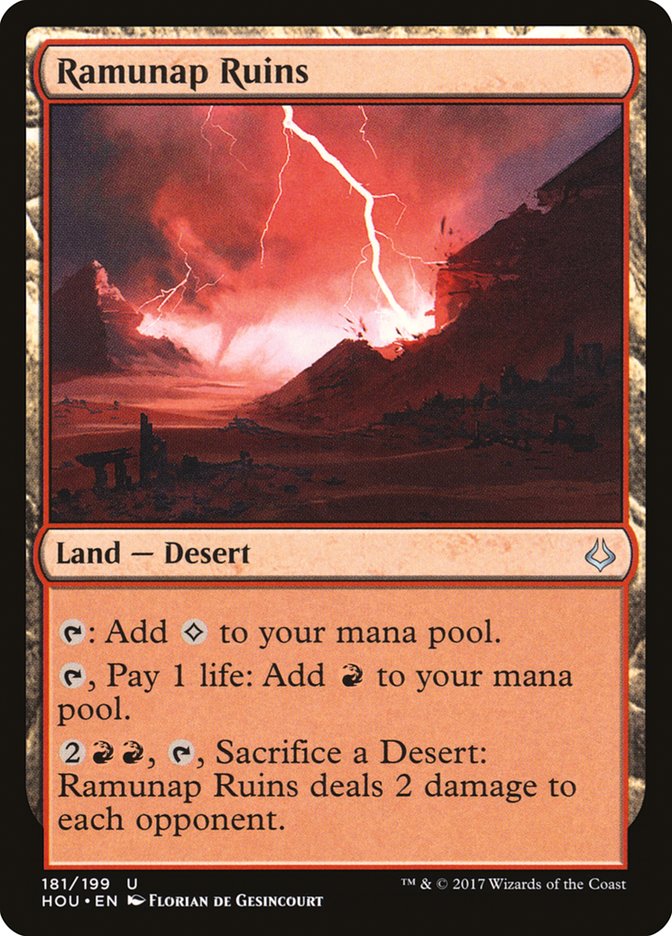I had no clue how to start this article. My life currently feels like a fairytale, and there are just no words I can find to articulate what I’m currently feeling. I’ve already written and deleted more words for this intro than I’ve used for most of my previous articles. “Absurd,” “spectacular,” and “phenomenal” all feel like just words I can use as a cop-out for expressing what Corey, Brian, and I did.
Maybe that’s what happens when you accomplish the unbelievable.
Last weekend wasn’t perfect, though. It was close, but I made one massive mistake I won’t try to sweep under the rug. I won #GPDEN with a deck I most recently called unplayable. This upset a rather large subset of my audience, as many come to me for advice when it comes to Standard, and for good reason. This honestly sucked, because I traditionally put so much stress on myself to provide people with the correct answers. Last week I was wrong, and I am deeply sorry for that. I never try to dupe my audience for personal gain. I may omit talking about the entire subject if I want to be selfish, but I never manipulate the masses for personal gain. It’s not a good short- or long-term strategy, but on top of that it’s dishonest.
I didn’t think Temur Energy was a good deck choice at the beginning of last week, and openly discussed those opinions in my article. Two things changed my mind. First off, my best buddy Brian Braun-Duin said he was doing well with it, and that’s a good enough reason for me to try something out. What really sold me was when I took a deeper look at the format and discovered something interesting. Almost every deck in the format was evolving to support more and more removal. This was of course in the attempt to attack both Ramunap Red and Mono-Black Zombies.
Creatures (24)
- 4 Longtusk Cub
- 4 Bristling Hydra
- 4 Whirler Virtuoso
- 4 Servant of the Conduit
- 4 Rogue Refiner
- 3 Glorybringer
- 1 Rhonas the Indomitable
Lands (22)
Spells (14)

Temur Energy is also a creature deck, which this additional removal can be used to kill, but the energy these creatures create gets left behind, causing these trades to be beneficial for Temur. This might have been why my theory on the deck was initially off, as once I readjusted, the results mirrored my expectations. It didn’t take much more testing before I was locked in on Brian Braun-Duin’s exact 75 and I could go back to enjoying the last couple of days with my family back in North Dakota.
Now, there’s really not much more I want to say about the preparation for #GPDEN and the event itself. Things broke extremely in my favor for history to end as it did, and I will be the first to say how fortunate I am for getting so lucky. That’s not why I’m here. I’m here to redeem myself for my last week’s blunders in my article and get back into your good graces as a content creator you can trust. I’ve learned much more about this existing metagame than I knew last week, and am going to break it all down for you this week. It just sucks there are no more Regional Qualifiers for Pro Tour Ixalan.
Yes, Corey, Brian, and I effectively “perfected” the Grand Prix with the “stockiest” of stock version of Temur Energy, but what does that really say? I told Brian going into the event that I didn’t have a ton of time to test, which made me want to lean on skill more than style. I knew I wouldn’t have time to develop something like Ulvenwald Hydra for Grand Prix Omaha, which would make me want to play something with some built-in flexibility. He said Temur Energy was just that, and I blindly followed, since I wasn’t able to get Mardu Vehicles exactly where I wanted it.
That said, our combined results heavily skewed the data from the event. Not one copy snuck into the Top 16, and only six variants found their way into the Top 32. Excluding us, the deck does represent over 20% of the Top 32, which is impressive, but not dominant. Temur Energy has proven itself to be a competitive deck, but nothing more than that. At least for the time being.
The real story of the event, from a deck perspective of course, is the uprising of Jeskai God-Pharaoh’s Gift.
Creatures (28)
- 4 Insolent Neonate
- 1 Mausoleum Wanderer
- 2 Cataclysmic Gearhulk
- 4 Angel of Invention
- 1 Glint-Nest Crane
- 4 Minister of Inquiries
- 4 Trophy Mage
- 4 Walking Ballista
- 4 Champion of Wits
Lands (23)
Spells (9)
Sideboard

Many of the game’s best players showed up with this deck, and almost all of them found their way into the Top 32. This deck is flashy, powerful, and relatively consistent, but in my opinion it is fragile. I attribute the success these players found to come from the deck’s surprise factor going into the event, their elite ability to sling cards, and their opponents’ lack of understanding what’s important during the games. I expect many players to pick this deck up in the near future, but unsure of how long it will take them to set it back down. That’s entirely up to how the metagame reacts to it.
Creatures (23)
- 4 Longtusk Cub
- 3 Bristling Hydra
- 4 Whirler Virtuoso
- 4 Servant of the Conduit
- 4 Rogue Refiner
- 2 Glorybringer
- 2 The Scarab God
Planeswalkers (2)
Lands (22)
Spells (13)

Michael Jacob played something similar to this at Grand PrixDenver, but I’ve taken some time myself to get you the list I would use for initial testing for Grand Prix Washington DC. As you can see, this deck is very similar to a regular-looking Temur Energy deck, as it only splashes for two cards. Those two cards just so happen to be extremely relevant for the expected metagame moving forward.
The Scarab God is almost all you need to defeat any God-Pharoah’s Gift deck, but the five-drop is also an amazing “mirror breaker” against Temur Energy. Splashing does cause some lost points against Ramunap Red and Mono-Black Zombies, but I expect many players to adopt a fourth color moving forward as no one likes to be behind in the mirror. I will be putting in some work with this deck over the weekend and will be back next week with definitive data on whether this deck has what it takes or not.
The biggest loser from this past weekend was Mono-Black Zombies, and that will most likely be reflected next week at Grand Prix Washington DC. The deck’s just too rigid in design to maneuver around the hateful metagame, and that was seen in Denver this past weekend. Now, that’s not to say the deck’s bad, as the two undefeated players in Round 10 were both playing the deck, but the deck’s target on its head is difficult to dodge. Zombies will still be in attendance at Grand Prix Washington DC, but in lower numbers than we’ve previously been accustomed to.
So what does that say about Ramunap Red? Well, Ramunap Red doesn’t seem to be going anywhere, in all honesty. It’s a difficult deck to hate out, outside of strategies that function favorably against it like Mono-Black Zombies, Temur Energy, and B/G Constrictor. The metagame’s inability to push it out is exactly why I believe it may be a great choice going into Grand Prix Washington DC. Many will be focused on beating Jeskai God-Pharaoh’s Gift and Temur Energy, causing cards like The Scarab God to take favor over trying to find good ways to beat Ramunap Red.
Even though the aggressive deck filled up three slots of Grand Prix Denver’s Top 8, it wasn’t the talk of the tournament and saw very little camera time thanks to them always putting me in the limelight. That could cause many who don’t have SCG Premium to underestimate the strategy, as no one seems to be talking about how good that deck still is. I wouldn’t be surprised at all to see the deck perform better than anything else at Grand Prix Washington DC. Don’t sleep on either preparing with or against this deck. It’s vital you respect this deck over any other. I promise you I will be!
Last, we get to control. There’s so much noise about all the variations, but that’s all it is to me, noise. Now, I’m starting to hear rumblings about U/B Control being the answer to this metagame, and I can’t stop from laughing. What metagame? There are tons of different decks, and new ones keep showing up and doing well. For the first time in a long time, we are seeing a metagame shift around, allowing people to innovate tech for every tournament.
Control already wasn’t beating those metagames, so how are you to expect it to now all of a sudden beat the known and unknown? Some of the game’s best tried to do that this past weekend with U/W Approach, and they fell on their faces. Control’s just not good, and I honestly hope you don’t believe me so I can prove it myself to you next weekend.
Now, that’s what you’ll need to concern yourself with for next week before Star City Games goes to Washington DC to run the Grand Prix. Until then, I’m guessing a few of you out there have sleeved up our Temur Energy list from Grand Prix Denver and came here looking for some advice on that specific list. So without further ado, I present you with my sideboard guide for the deck that had a flawless victory last weekend.
Creatures (24)
- 4 Longtusk Cub
- 4 Bristling Hydra
- 4 Whirler Virtuoso
- 4 Servant of the Conduit
- 4 Rogue Refiner
- 3 Glorybringer
- 1 Rhonas the Indomitable
Lands (22)
Spells (14)

Sideboarding in this deck depends on whether you’re on the play or draw. On the play against other midrange decks, you want to be on the front foot with cards like Longtusk Cub and Bristling Hydra. On the draw, you want to rely on a higher density of removal spells to make sure they don’t take over the game in the early turns.
Whirler Virtuoso’s value fluctuates based on what configuration you’re going with. It’s not that aggressive, making it a card you can take out on the play, and that’s especially true when you want to make room for cards like Chandra, Torch of Defiance and Tireless Tracker. On the draw, however, the card is more important, as a higher density of removal will leave you weaker at fighting opposing planeswalkers.
We are at the end of the road when it comes to this format, so hopefully you’ve learned these vital rules by now going into Grand Prix Washington DC. You don’t want too much removal on the play, yet you need it on the draw. That’s why you see this deck play so many permanents that also act as creature removal yet also play so much removal on top of them. On the draw, these permanents can sometimes be too slow, causing you to need cheaper spell-based removal. On the play, you don’t want to open a hand of just removal, so you mitigate by playing expensive permanents that act as removal spells.
You need to sideboard large chunks of your deck at all times to be competitive in this format.
Mono-Black Zombies
On the Play, Out:
On the Play, In:
On the Draw, Out:
On the Draw, In:
Ramunap Red
Out:
In:
Temur Energy
On the Play, Out:
On the Play, In:
On the Draw, Out:
On the Draw, In:
Ramp Variants
Out:
In:
Jeskai God-Pharaoh’s Gift
Out:
In:
Mardu Vehicles
On the Play, Out:
On the Play, In:
On the Draw, Out:
On the Draw, In:
All right, well, that’s all I have for you this week. It’s time to focus all my efforts into learning even more about this format as I enjoy my first weekend at home since the Hour of Devastation Prerelease. I’ve earned it, and I’m sure going to enjoy it! Be sure to stop by the comments below if you have any questions, and I’ll do my best to answer them before Friday Night Magic tonight. I’ll also be back next week with some need-to-know information if your plans are to join Corey and me in the Top 8 of Grand Prix Washington DC!





